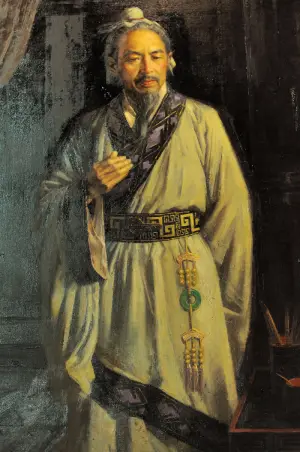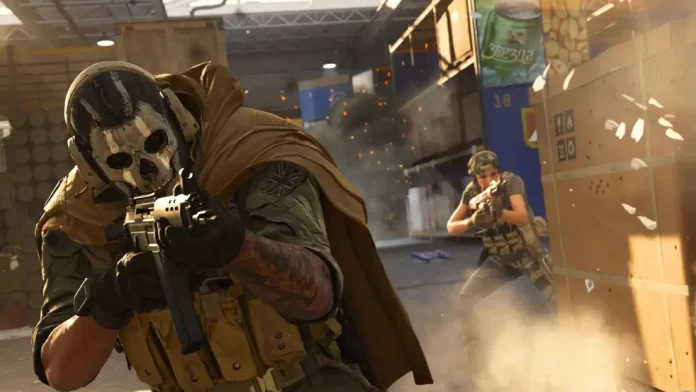Guerrilla warfare is a unique type of warfare where regular folks, not part of a formal army, use sneaky tactics like ambushes, sabotage, and hit-and-run moves in rebellions, conflicts, or wars. Guerrilla warfare happens on a country’s turf, with locals using their knowledge of the land to outsmart the official military, police, enemy, or rival groups. It is also a way citizens shake up or weaken a government or system they don’t like. In this article learn, what is Guerrilla Warfare, its Origin, Strategies and Objectives, and Some of the well-known Guerilla Wars in History.
Contents
What is Guerrilla warfare?
Guerrilla warfare is a type of conflict strategy characterized by unconventional and irregular tactics used by small, often non-traditional military groups. In guerrilla warfare, individuals, often civilians not affiliated with a formal army, employ tactics such as ambushes, hit-and-run attacks, sabotage, terrorism, and raids to combat larger, more conventional military or government forces. The term “guerrilla” itself, derived from the Spanish word for “little war,” encapsulates the essence of these hit-and-run tactics.
Guerrilla strategies prioritize small, hit-and-run skirmishes to gradually wear down adversaries and force them to retreat, avoiding confrontation with better-equipped enemy armies. This approach is often adopted due to inferior armaments or limited forces. Guerrilla organizations, when well-organized, frequently rely on support from the local population or external backers who share their goals.
In the Western context, guerrilla warfare has sometimes been exclusively linked to communist tactics. This association is largely due to its historical use by leaders such as Mao Zedong in China and Ho Chi Minh in North Vietnam. However, it’s important to note that while these leaders were associated with communist movements, guerrilla warfare itself is not exclusive to any particular ideology and has been employed by various groups with diverse political motivations throughout history.
While guerrilla warfare is often associated with revolutionary or insurgent movements, it can also be employed as a defensive strategy to protect a nation or its interests. In some cases, nations facing invasion or occupation have used guerrilla tactics to resist and defend their territory. The adaptability and flexibility of guerrilla warfare can make it a viable option for those facing superior military forces, allowing them to engage in asymmetric warfare and potentially wear down the invading or occupying forces over time. The use of guerrilla tactics in defense is not limited to any specific ideology or political orientation.
Origin of Guerrilla Warfare tactic

The term “guerrilla” finds its roots in the Spanish word “guerra,” meaning war. The concept of Guerrilla Warfare has historical origins dating back to Sunzi (Sun-Tzu), a Chinese general and strategist who advocated for its use in his classic book, The Art of War, around the sixth century BC. Additionally, Quintus Fabius Maximus, a Roman general known as the “Father of Guerrilla Warfare,” employed his “Fabian strategy” in 217 BC to resist the formidable Carthaginian leader Hannibal Barca, influencing the evolution of modern guerrilla tactics.
The term “Guerrilla warfare” gained prominence in the 19th century when citizens of Spain and Portugal utilized guerrilla tactics to successfully counter Napoleon’s French army during the Peninsular War.
Strategies of Guerrilla Warfare
One key aspect of guerrilla warfare is adaptability; these fighters quickly adjust their strategies to exploit weaknesses and navigate changing circumstances. Local expertise and knowledge of the terrain also play a crucial role, allowing guerrilla forces to use the environment to their advantage. The ultimate goal of guerrilla warfare is often to destabilize or weaken a dominant government, challenge perceived tyranny, protect the nation from external invasions, or effect political change. Historical examples include the Viet Cong during the Vietnam War and Che Guevara’s role in the Cuban Revolution. Overall, guerrilla warfare challenges traditional notions of conflict and highlights the effectiveness of asymmetrical strategies against more powerful adversaries. Some Strategies of Guerrilla Warfare are as follows:
Asymmetrical Strategies of Guerrilla Warfare
- Asymmetric warfare or irregular warfare is a strategy of guerrilla warfare that pits opponents of varying strengths against one another in which, the goal is to gain political power and popular support at the expense of the enemy, rather than only routing an invading force. Guerrilla warfare, then, seeks to increase the effect of a small, light force on a larger, heavier one.
- Guerrillas can eventually force their opponents to retreat by weakening them through attrition if they are successful.
- Guerrillas typically avoid confrontation with big units or formations of enemy forces to focus their tactics on attacking small groupings of enemy personnel and resources to gradually weaken the opposition force while sustaining the fewest possible casualties themselves.
- Guerrillas organize in small units and exploit terrain that is inaccessible to bigger forces. They value stealth, mobility, and surprise.
- Guerrilla fighters, in keeping with General Tzu’s principles, know when to fight and when not to fight. How to avoid what is strong and attack what is weak, how to deceive the enemy, how to appear weak when the opponent is strong, and how to appear strong when the opponent is weak.
- Guerrillas frequently conduct surprise “hit-and-run” attacks using compact, swiftly moving units. These attacks aim to minimize their casualties while weakening and demoralizing the bigger opponent force.
- Guerrilla groups claim that the regularity and intensity of their attacks will incite their adversary to launch counterattacks that are so ruthless as to encourage support for the rebel cause.
- The ultimate objective of guerrilla tactics, when faced with massive deficits in manpower and military weapons, is usually the eventual withdrawal of the enemy army rather than its complete capitulation.
- Guerrilla fighters frequently target enemy supply line infrastructure, including bridges, railroads, and airfields, to restrict the movement of enemy soldiers, weaponry, and supplies.
- Guerrilla fighters wear uniforms or distinctive insignia to blend in with the local populace.
- Guerrilla forces, who rely on the support of the local populace, use both military and political means. A guerrilla group’s political wing is skilled at producing and distributing propaganda to win the public’s hearts and minds and attract new combatants.
Non-traditional techniques
- In Non-traditional techniques, Guerillas can use the local community for logistical support or human shields and make use of homemade explosives by guerrilla organizations.
- The enemy force might start to distrust every civilian as a possible guerilla supporter.
- Foreign sponsors may support guerrillas with political backing or funding, and many of them can be skilled at using force and propaganda to influence the population.
- In Non-traditional techniques, children also be used extensively by guerrilla forces as fighters, scouts, porters, spies, informants, or for other tasks.
Guerrilla Warfare and Terrorism
Guerrilla warfare and terrorism, though distinct, share commonalities in their unconventional approaches to achieving political or ideological goals. Guerrilla warfare involves irregular tactics, employed by small, mobile groups against larger conventional forces, with a focus on wearing down the enemy over time. Insurgent movements often use guerrilla tactics to challenge or overthrow governments, relying on local knowledge and support. Terrorism, on the other hand, utilizes violence and fear to coerce populations or governments, targeting civilians to create psychological impact and provoke specific concessions. While guerrilla warfare concentrates on military or security forces over an extended period, terrorism aims for immediate results through high-impact, often symbolic attacks on non-combatants. The key distinctions lie in their targets, duration, and visibility, with guerrilla warfare seeking strategic change and terrorism prioritizing immediate, psychological impact.
Governments often use the term “terrorism” as a form of political propaganda to disparage opponents whose terrorist status is under debate. Although guerrillas are primarily interested in enemy operational military formations, actual terrorists are more interested in non-military agents and primarily target civilians.
Objective of Guerrilla Warfare
Throughout history, various groups have utilized guerrilla warfare, often associated with revolutionary movements and resistance against occupying or invading forces. In history, the primary objective of guerrillas was to destabilize or weaken a dominant external army that was trying to invade the nation.
But, in modern times objective of guerrilla warfare is often seen as the common people’s attempt to fight against an oppressive government that uses military force and intimidation to suppress the common people. However, whether the public sees these fighters as heroes depends on their methods and reasons. While some guerrillas fight to protect basic human rights, others cause unnecessary violence and even use terrorist tactics against people who don’t support them.
For instance, in the late 1960s, a group called the Irish Republican Army (IRA) carried out attacks in Northern Ireland against British security forces, government buildings, and Irish individuals seen as loyal to the British Crown. The IRA’s strategies, like indiscriminate bombs that often harmed innocent bystanders, were labeled as terrorism by the British government and media.
Guerrilla groups come in different sizes, from small, isolated units called “cells” to larger regiments with thousands of trained fighters spread across an area. The leaders of these groups usually state their political goals clearly. Many guerrilla groups have both military troops and political wings. These political wings focus on creating and spreading propaganda to influence the local population and recruit new soldiers.
Some of the well-known Guerilla Wars from History
Quintus Fabius Maximus Verrucosus
In the third century BC, Quintus Fabius Maximus Verrucosus came up with the Fabian strategy, a tactic the Roman Republic successfully used against Hannibal’s army. Quintus Fabius Maximus Verrucosus used aspects of guerrilla warfare, like avoiding big battles and ambushing small enemy groups, to great effect.
Umayyad and Abbasid caliphates
During the eighth to tenth centuries, the Umayyad and later Abbasid caliphates commonly employed guerrilla warfare along the eastern boundary of the Roman Empire. Their tactics mainly revolved around gathering intelligence and surveillance. They focused on evacuating vulnerable areas, tracking the enemy, and launching raids when the opposing forces were separated. To preserve this style of combat for future use, it was officially documented in a military handbook in the late eleventh century, titled De velitatione bellica, translating to “On Skirmishing” in Latin.
Shiva sutra or Ganimi Kava
In the 17th century, the founder of the Maratha Empire Chhatrapati Shivaji Maharaj, developed the Shiva sutra or Ganimi Kava (Guerrilla Tactics) to overcome the Mughal Empire which was much larger and more powerful army than the Maratha army.
The Cotiote War
In the Cotiote War (1793–1806), Kerala Varma, also known as Pazhassi Raja (1753–1805), utilized guerrilla tactics primarily in mountainous woods to resist the British East India Company in India. Despite the efforts of Arthur Wellesley (1797–1805) leading troops to counter Pazhassi’s strategies, they faced significant challenges. This conflict marked one of the longest and deadliest wars for the East India Company on the Indian subcontinent, with up to 80% of the president’s army regiments lost during a decade of fighting.
War against Spain
Between 1863 and 1865, nationalists in the Dominican Republic engaged in a guerrilla war against Spain, which had returned to the country 17 years after its initial independence. This period of conflict is recognized as the Dominican Restoration War. As a result of this struggle, Spanish forces eventually withdrew, leading to the establishment of a second republic in the Dominican Republic.
The Rif War
During the Rif War in 1920, the Moroccan military commander Abd el-Krim (c. 1883–1963) and his father[16] united the Moroccan tribes under their rule and took up arms against the French and Spanish occupants. Due to the first-ever use of tunnel warfare in conjunction with contemporary guerrilla tactics, the Moroccan colonial troops suffered significant losses.
The Irish War of Independence
During the guerilla phase of the 1919–1921 Irish War of Independence, Michael Collins and Tom Barry established several tactical aspects of guerrilla warfare in the early 20th century. Collins created his urban guerilla warfare techniques primarily in Dublin City, the capital of Ireland. The British opponent was frustrated by operations in which small Irish Republican Army (IRA) units, consisting of three to six insurgents, swiftly attacked a target before dispersing into civilian populations.
The Algerian rebels
A small group of Algerian rebels ignited the 1954 Algerian Revolution. The insurgents fought the French for more than eight years with only primitive weapons. This still serves as a model for contemporary terrorism, asymmetric warfare, torture, and insurgency and counterinsurgency.
Bangladesh Liberation War
During the Bangladesh Liberation War that turned East Pakistan into Bangladesh in 1971, the Bangladeshi military, paramilitary, and civilians formed the Mukti Bahini which translates as “freedom fighters” or the liberation army known as Mukti Fauj. However, the Indian Intelligence R&AW also helped to form this Mukti Bahini or Mukti Fauj.
Conclusion
In conclusion, guerrilla warfare is a multifaceted and dynamic form of conflict that has played a significant role in numerous historical and contemporary conflicts around the world. This unconventional strategy relies on adaptability, surprise, and the resilience of small, often poorly equipped groups of fighters. While it may be a challenging and protracted method of warfare, guerrilla tactics have proven to be effective in achieving the objectives of insurgent or resistance movements, particularly when facing larger, more conventionally equipped adversaries.
Guerrilla warfare has demonstrated that military superiority does not always guarantee victory, and it underscores the importance of understanding the local environment, winning the support of the population, and exploiting the vulnerabilities of the opponent. Moreover, it raises ethical questions about the balance between achieving political goals and the means used to attain them.
The study of guerrilla warfare is essential for military strategists, policymakers, and scholars alike, as it provides valuable insights into the dynamics of asymmetric conflict and the complex interplay of political, social, and military factors. By examining the history of guerrilla warfare and the experiences of both successful and unsuccessful movements, we can gain a deeper understanding of the nature of insurgency and counterinsurgency. In an ever-evolving modern warfare where conventional military tactics may not always be the answer, the lessons of guerrilla warfare continue to shape the way we approach and understand conflict in the 21st century.
Sources
- Guevara, Che. Guerrilla warfare. Rowman & Littlefield Publishers, 2002.
- Laqueur, Walter. Guerrilla warfare: A historical and critical study. Routledge, 2017.
- Joes, Anthony J. Guerrilla warfare: A historical, biographical, and bibliographical sourcebook. Bloomsbury Publishing USA, 1996.
- McNeilly, Mark (2003). Sun Tzu and the Art of Modern Warfare. p. 204.
- Tomes, Robert (2004). “Relearning Counterinsurgency Warfare” (PDF). Parameters.
- Creveld, Martin van (2000). “Technology and War II: Postmodern War?”. In Charles Townshend (ed.).
- Mao, Zedong (1965). Selected Works: A Single Spark Can Start a Prairie Fire. Vol. I. Foreign Languages Press, Internet Archive.
- Deutsch, J (2017). “Pentagon braces for Islamic State insurgency after Mosul”. Al-Monitor.
- Child Soldiers International (2016). “A law unto themselves? Confronting the recruitment of children by armed groups”.
- Halibozek, Edward P.; Jones, Andy; Kovacich, Gerald L. (2008). The corporate security professional’s Handbook on Terrorism (illustrated ed.). Elsevier (Butterworth-Heinemann). pp. 4–5. ISBN 978-0-7506-8257-2. Retrieved 17 December 2016.
- Sinclair, Samuel Justin; Antonius, Daniel (2012). The Psychology of Terrorism Fears. Oxford University Press, USA. ISBN 978-0-19-538811-4.
- Keeley, Lawrence H. (1997). War Before Civilization. Oxford University Press.
- Leonard, Thomas M. (1989). Encyclopedia of the developing world.
- Snyder, Craig (1999). Contemporary security and strategy.
- Laqueur, Walter (1977). Guerrilla: a historical and critical study, Internet archive.
- Ellis, Joseph J. (2005). His Excellency: George Washington. New York: Vintage Books. pp. 92–109 – via Internet Archive.
- McMahon, Lucas (2016). “De Velitatione Bellica and Byzantine Guerrilla Warfare” (PDF). The Annual of Medieval Studies at CEU. 22: 22–33.
- Dennis, George (1985). Three Byzantine Military Treatises. Washington, D.C.: Dumbarton Oaks. p. 147.
- Hooper, Nicholas; Bennett, Matthew (1996). Cambridge illustrated atlas, warfare: the Middle Ages, 768-1487, Internet Archive.
- Hanhimäki, Jussi M.; Blumenau, Bernhard; Rapaport, David (2013). “The Four Waves of Modern Terrorism” (PDF). An International History of Terrorism: Western and Non-Western Experiences. Routledge. pp. 46–73. ISBN 9780415635417.Hanhimäki, Jussi M.; Blumenau, Bernhard; Rapaport, David (2013). “The Four Waves of Modern Terrorism” (PDF). An International History of Terrorism: Western and Non-Western Experiences. Routledge. pp. 46–73. ISBN 9780415635417.
- Duff, James Grant (2014). The History Of The Mahrattas. Pickle Partners Publishing. p. 376. ISBN 9781782892335.
- Wilson, William John (1883). History of Madras Army. Printed by E. Keys at the Govt. Press, Internet Archive.
- Pons, Frank Moya (1998). The Dominican Republic: a national history. Markus Wiener Publishers. ISBN 978-1-55876-192-6.
- Islamicus (2023). “ABD EL-KRIM”. Islamicus. Internet Archive.
- Moon, Millard E. “Invisible Armies: An Epic History of Guerrilla Warfare from Ancient Times to the Present.” (2013): 80-81.
- Ferriter, Diarmaid (2020). “Diarmaid Ferriter: Bloody Sunday 1920 changed British attitudes to Ireland”. The Irish Times.
- Chisholm, Hugh, ed. (1911). “Flying column“. Encyclopædia Britannica. Vol. 10 (11th ed.). Cambridge University Press. p. 585.
- Horne, Alistair (2022). “A Savage War of Peace: Algeria 1954–1962. Rev. ed”. The SHAFR Guide Online.
- Mohaiemen, Naeem. “Terrorists or Guerrillas in the Mist.” PDF.
FACT CHECK: We strive for accuracy and fairness. But if you see something that doesn’t look right, please Contact us.
DISCLOSURE: This Article may contain affiliate links and Sponsored ads, to know more please read our Privacy Policy.
Stay Updated: Follow our WhatsApp Channel and Telegram Channel.














